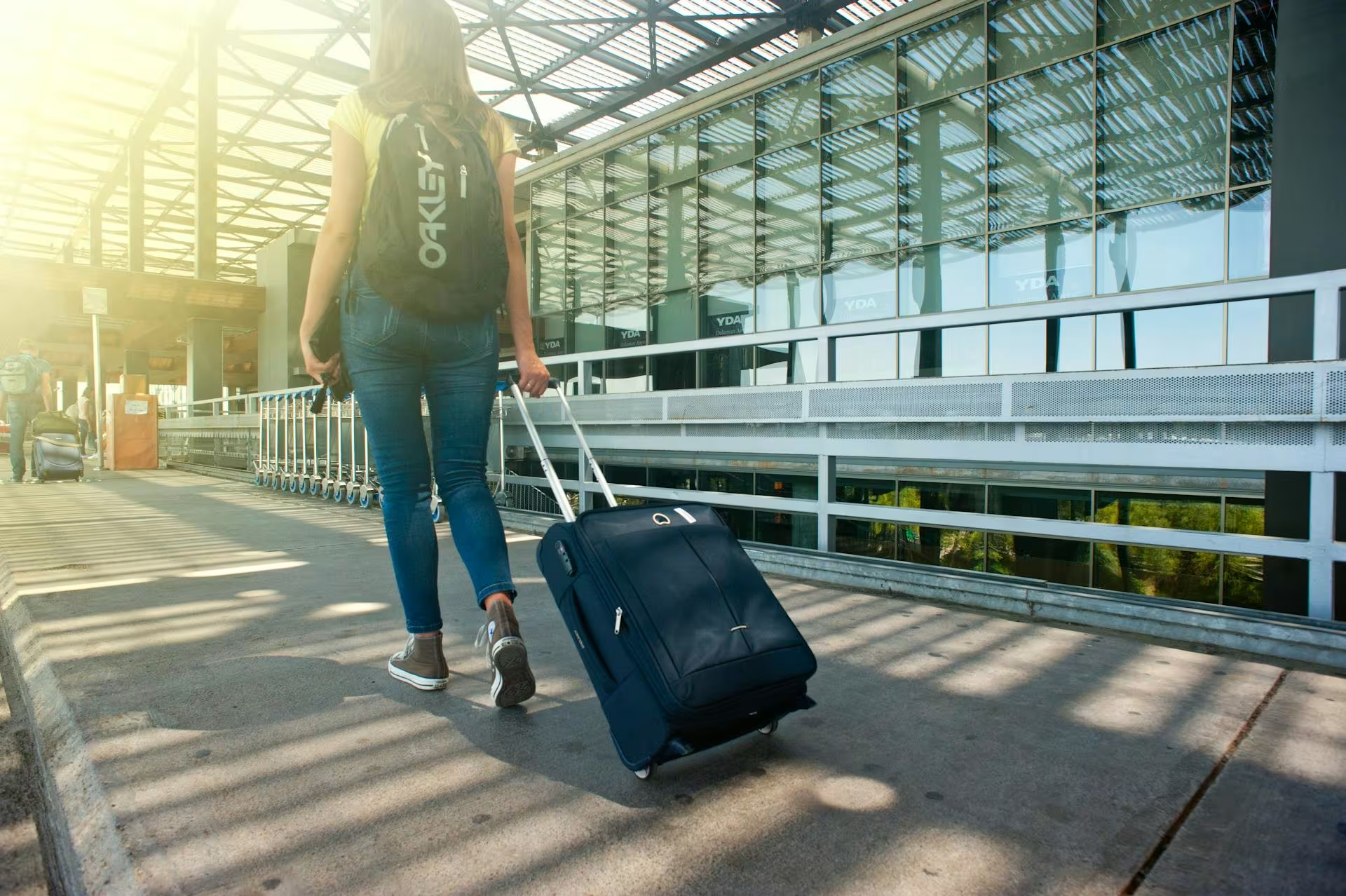Introduction
Over the past decade, a quiet revolution has taken hold of the travel world: more women are choosing to explore the world alone. Once considered unusual or even risky, alone travel for a woman has transformed into a powerful symbol of independence, confidence, and self-expression. Whether for a weekend getaway or a six-month sabbatical, solo female travel is not just a trend, it’s becoming a rite of passage for women seeking freedom, adventure, and personal growth.
At the same time, traveling solo does not come without its challenges. Safety concerns, cultural judgments, and logistical hurdles still persist, especially depending on the destination. Yet, for many, the rewards far outweigh the risks. In this article, we’ll explore the main advantages and drawbacks of solo female travel, backed by practical insights and actionable advice. If you’re already thinking about destinations, don’t miss our guide to the best solo-friendly cities in Europe, which pairs perfectly with what you’re about to read.
Empowerment & Self-Discovery
Traveling alone as a woman often leads to one of the most transformative experiences you can have. The simple act of planning your itinerary, booking your stays, and navigating a new city by yourself fosters both self-reliance and a deep sense of achievement. Every decision is yours to make, and with that autonomy comes empowerment. You begin to understand your own strengths, manage fears, and make choices without external influence.
Solo travel also becomes a mirror, reflecting not only your curiosities but also your inner limits. When challenges arise, getting lost, negotiating with locals, or facing a moment of cultural confusion, you learn how resourceful and resilient you can be. Many travelers have noted that their self-confidence improved dramatically after their first trip alone, often influencing other areas of life like career or relationships. In moments of solitude, journaling or simply observing the world with fresh eyes can deepen self-awareness and inspire lasting clarity.
Total Freedom & Flexibility
One of the most immediate advantages of solo travel is the complete freedom it offers. You can wake up without a set plan, follow spontaneous leads, or change destinations last minute. Want to spend an entire day at a museum or detour into a remote village because you heard about a festival? You can, and no one will argue. This level of flexibility is rare in group travel and allows you to fully listen to your instincts and curiosities.
This freedom extends to every aspect of the journey: where you eat, how fast you travel, and what you prioritize. For women especially, this freedom can feel liberating in contrast to social expectations or daily responsibilities. It encourages self-expression and gives space to redefine comfort zones. Whether you’re a first-timer or a seasoned digital nomad, embracing your own pace makes travel more sustainable and enjoyable. Consider adding slow travel techniques to your solo itinerary to balance freedom with depth.
New Connections
Contrary to what many assume, solo travel rarely means isolation. In fact, traveling alone often makes it easier to connect with locals and fellow travelers. You’re more approachable without a group, and people tend to engage more readily. From hostel lounges to local walking tours or even train rides, opportunities for authentic interaction arise naturally.
Many solo women travelers find themselves forming deep, spontaneous friendships on the road. These connections can lead to unique invitations, dinner with a local family, a night out with expats, or collaborations with other creatives. While group travelers may remain in their bubble, solo travelers often gain access to layers of culture that only open when you’re alone and curious. If you’re new to this idea, joining platforms like Workaway or Meetup can enrich your journey even further.
Budget Control
Another underrated benefit of solo travel is the full control you have over your budget. You decide when to splurge and when to save, without compromise. Want to spend three nights in a boutique eco-lodge but save on meals by cooking? You can. Or maybe you’ll hop between budget-friendly hostels and then reward yourself with a luxury spa day. Managing your own expenses allows you to travel intentionally, based on your priorities.
In many cases, traveling alone actually helps cut costs. You’re less likely to get caught in tourist traps or overspend on group meals. Additionally, some destinations offer great solo travel infrastructure, think affordable public transport, female-only dorms, or free walking tours. To maximize savings, use budgeting tools like Trail Wallet or Revolut, which let you monitor and categorize expenses on the go. Planning smartly means your money goes further, especially if you’re building a long-term travel lifestyle or living as a remote freelancer abroad.
Safety & Perceived Danger
One of the most common concerns for solo female travelers is safety, and it’s not without reason. Depending on where you go, risks such as petty theft, harassment, or simply being targeted as a tourist can feel amplified when traveling alone. Unfortunately, many women are taught to be hyper-aware from a young age, and those instincts often remain on high alert while abroad.
However, safety can be managed. Researching local customs, choosing well-reviewed accommodations, and sharing your location with someone you trust are excellent starting points. Some women also use tracking apps like GeoZilla or find comfort in local female-only spaces such as cafés or co-living hubs. The perception of danger shouldn’t discourage solo travel, but it does require preparation. For real-world strategies, check out our article on how to stay safe as a woman abroad.
Loneliness & Homesickness
Even the most independent traveler can feel lonely or homesick at times. These emotions often hit during long layovers, quiet dinners, or when things go wrong. Having no one to share a laugh or vent with in the moment can intensify emotions, especially in unfamiliar surroundings. Many solo travelers describe a rhythm: initial excitement, followed by a dip, and finally a sense of equilibrium.
Managing loneliness means planning for connection as much as solitude. Keeping in touch with loved ones through regular calls, journaling, or even sharing travel updates on a blog can provide emotional grounding. Joining local events, signing up for group classes, or volunteering also brings structure and human contact. Emotional highs and lows are part of the solo journey, they don’t define it.
Logistical Challenges
Traveling alone means managing every detail by yourself, from bookings and navigation to problem-solving and handling emergencies. There’s no one to take over if you’re tired, sick, or overwhelmed. In case of lost luggage, missed flights, or bureaucratic hiccups, all the responsibility rests on your shoulders.
However, preparation goes a long way. Having backups, using planning apps, and building in rest days can reduce stress. Solo women travelers often become highly organized as a result, improving their confidence with each trip. Knowing how to handle bureaucratic tasks like visa renewals or replacing a lost passport abroad becomes second nature. While the learning curve is steep at times, the payoff is a lasting skillset that travels with you.
Cultural & Social Barriers
In some countries, a woman traveling alone may still be met with confusion, suspicion, or even disapproval. Cultural norms vary widely, and what is seen as empowering in one place may be misunderstood in another. You may receive unsolicited attention, judgmental stares, or invasive questions about your marital status or intentions.
The key is cultural sensitivity and firm boundaries. Learn the local dress code, respect traditions, and adopt the local pace of interaction. At the same time, don’t be afraid to assert yourself when necessary. Reading country-specific forums and connecting with other women who have been there can help navigate these situations more smoothly.
Tips to Maximize the Pros & Mitigate the Cons
Choosing women-friendly destinations like Portugal, Japan, or New Zealand is a great start. Use resources like Solo Female Traveler Network or HerHouse for verified recommendations. When booking accommodations, read reviews from other solo women and prioritize central, well-lit areas.
Security tools like personal alarms, door locks, and encrypted VPNs for internet use add layers of safety. Pre-departure networking helps too: join Facebook groups, message hosts in advance, or use apps like Backpackr to meet others with similar itineraries. Maintaining a growth mindset and having resilience strategies, such as mindfulness apps or journaling habits, supports emotional balance. Finally, travel budgeting doesn’t have to be rigid, allocate a “freedom fund” for spontaneous experiences while still using apps to track your overall spending.
Conclusion
Traveling alone as a woman is a brave and rewarding act. It invites freedom, fosters confidence, and offers the rare chance to meet the world, and yourself, on your own terms. While challenges exist, they can be managed with preparation, awareness, and adaptability. Solo travel isn’t about isolation, it’s about connection, to places, people, and the parts of yourself waiting to be discovered.
If this is your first time considering it, take that step. Start small, start smart, but do start. The world is waiting, and so are you.
Frequently Asked Questions
Yes, solo female travel can be safe with proper preparation and awareness. Many countries are considered women-friendly and offer excellent infrastructure for solo travelers. It’s important to research your destination, stay in well-reviewed accommodations, and share your itinerary with someone you trust. Using safety apps, traveling during daylight hours, and dressing respectfully based on local culture can all contribute to a safer experience.
Some of the safest and most welcoming countries for solo female travelers include Japan, Portugal, Iceland, New Zealand, and Slovenia. These destinations offer strong public safety, helpful tourism services, and positive attitudes toward women traveling alone. For first-timers, we recommend starting with European cities that combine safety and solo-friendly activities — check out our guide to solo travel cities in Europe.
To avoid loneliness while traveling solo, build connections by staying in social accommodations like hostels or guesthouses, joining group tours or classes, and participating in events on platforms like Meetup or Couchsurfing. Regular calls home, journaling, and maintaining a digital travel diary can help you stay emotionally balanced. Many solo female travelers find that loneliness comes and goes, but connection is always possible with a little intention.
The main risks include safety concerns, loneliness, logistical stress, and cultural misunderstanding. However, these can be mitigated with research, tools, and mindset. Carrying a copy of your passport, using a local SIM card, and knowing emergency contacts are simple but powerful safety steps. For example, if you ever lose important documents, our article on what to do when you lose your passport abroad offers a detailed action plan.
Pack light but smart. Essentials include travel-sized toiletries, versatile clothing based on your destination’s culture and climate, a portable charger, copies of important documents, and personal safety items like a whistle or door lock. Consider packing a journal, a Kindle, and a scarf or shawl — they’re multifunctional and comforting. Always leave room for flexibility and remember: packing confidence is just as important as packing clothes.

